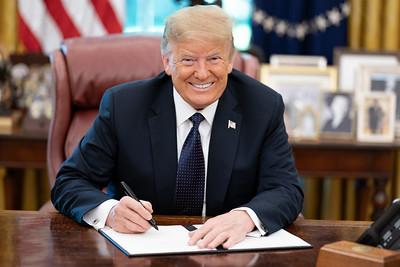April 16, 2025, marked a pivotal moment as the Trump administration announced plans to redefine the word "harm" under the Endangered Species Act, potentially dismantling crucial wildlife protections. Initiated by the U.S. Fish and Wildlife Service alongside the National Oceanic and Atmospheric Administration, the proposed rule seeks to exclude habitat destruction from the definition of harm—an interpretation that has stood for decades.
This alteration is positioned as part of President Trump’s broader initiative to bolster domestic drilling, logging, and development while dismantling regulatory hurdles associated with permit issuance. Administration officials argue that the existing definition burdens businesses, contending that species protection should only cover intentional acts of violence, such as hunting or trapping, rather than unintentional impacts of development.
However, environmental advocates are raising alarm over this proposal, asserting that habitat loss remains the most significant threat to species extinction. Andrew Bowman, president of Defenders of Wildlife, emphasized that many endangered species are listed due to habitat loss, warning that this regulatory change could make it nearly impossible to safeguard essential ecosystems like forests and rivers.
Bowman characterized the proposed change as the most substantial rollback of Endangered Species Act protections since its enactment in 1973, signaling a considerable risk for numerous species already teetering on the brink of extinction. The proposal is anticipated to trigger fierce backlash from environmental groups and may set the stage for legal challenges aimed at preserving the original intent of the Act.
This alteration is positioned as part of President Trump’s broader initiative to bolster domestic drilling, logging, and development while dismantling regulatory hurdles associated with permit issuance. Administration officials argue that the existing definition burdens businesses, contending that species protection should only cover intentional acts of violence, such as hunting or trapping, rather than unintentional impacts of development.
However, environmental advocates are raising alarm over this proposal, asserting that habitat loss remains the most significant threat to species extinction. Andrew Bowman, president of Defenders of Wildlife, emphasized that many endangered species are listed due to habitat loss, warning that this regulatory change could make it nearly impossible to safeguard essential ecosystems like forests and rivers.
Bowman characterized the proposed change as the most substantial rollback of Endangered Species Act protections since its enactment in 1973, signaling a considerable risk for numerous species already teetering on the brink of extinction. The proposal is anticipated to trigger fierce backlash from environmental groups and may set the stage for legal challenges aimed at preserving the original intent of the Act.






















